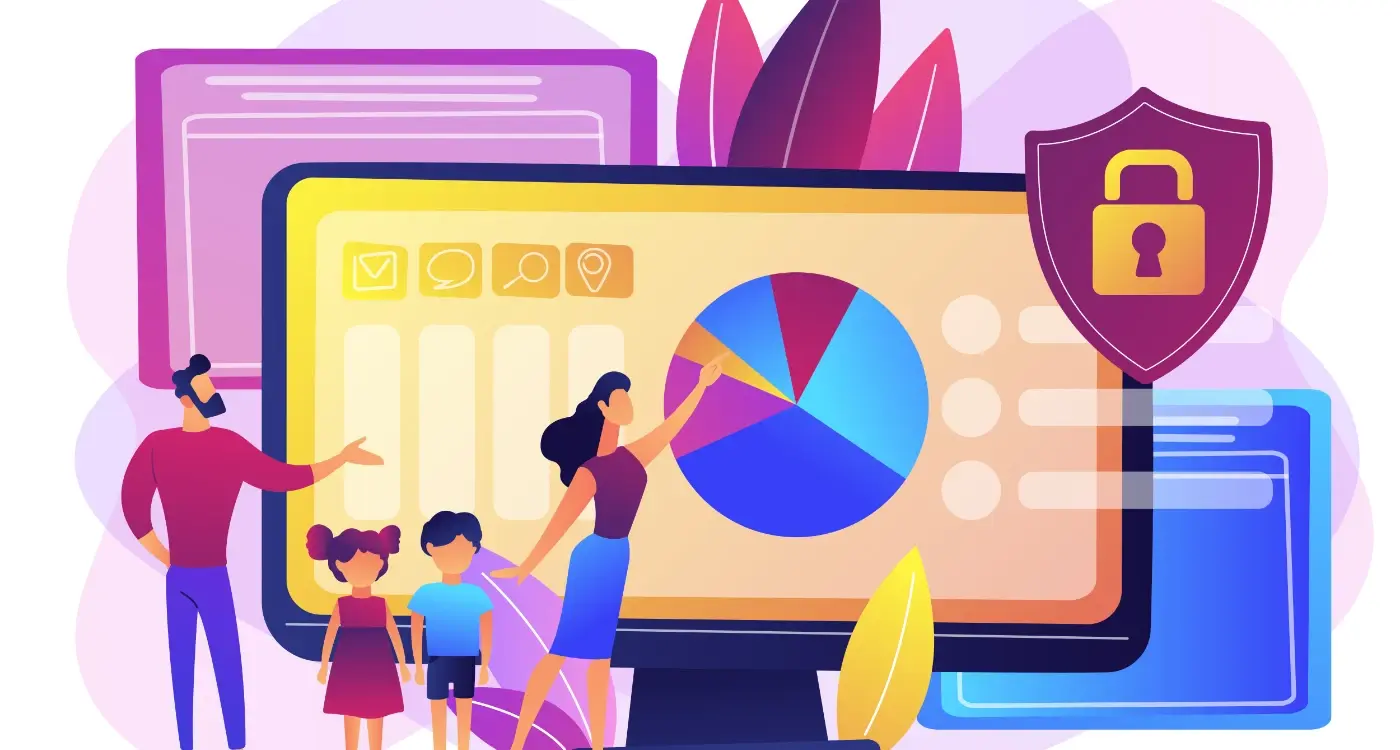How Do I Track Student Progress Effectively in My Educational App?
Only 23% of educational apps actually track student progress in a way that helps learning outcomes. That's a pretty shocking number when you think about it—most apps are flying blind when it comes to understanding how their users are actually progressing. I've been working with educational apps for years now, and I can tell you that effective student progress tracking isn't just a nice-to-have feature; it's what separates apps that genuinely help students learn from those that are just digital distractions.
The thing is, tracking student progress sounds straightforward until you start building it. Suddenly you're faced with questions like: what data should I collect? How much is too much? How do I make sense of all these numbers? And most importantly—how do I turn this data into something that actually helps students, teachers, and parents?
The best educational apps don't just track what students are doing—they track how students are learning and adapt accordingly
This guide will walk you through everything you need to know about building effective student progress tracking into your educational app. We'll cover the technical bits, the design considerations, and the common pitfalls that can turn your well-intentioned analytics into a confusing mess. Whether you're building your first educational app or looking to improve an existing one, you'll learn how to create tracking systems that actually work for everyone involved. Because at the end of the day, good tracking isn't about collecting data—it's about understanding learning.
Understanding What Student Progress Actually Means
Before you start building dashboards and collecting data, you need to understand what progress actually looks like in your educational app. It's not just about right and wrong answers—though that's part of it. Real progress involves multiple layers that work together to show how a student is developing.
Think about skill mastery first. This is where students move from struggling with a concept to understanding it, then applying it confidently. Your app needs to track this journey, not just the end result. A student might get ten maths problems wrong before suddenly clicking with the concept and getting the next ten right. That progression tells a story that a simple percentage score misses completely.
Beyond Right and Wrong Answers
Engagement patterns matter just as much. How long does a student spend on different activities? Do they rush through reading exercises but slow down for puzzles? Are they returning to your app regularly or only when reminded? These behaviours reveal learning preferences and motivation levels that teachers and parents need to see.
Time-based progress is another piece of the puzzle. Some students need longer to grasp concepts but end up with deeper understanding. Others pick things up quickly but forget them just as fast. Your tracking system should capture both speed and retention to give the full picture.
Individual Learning Journeys
Every student's progress looks different, and that's exactly how it should be. One child might excel at visual learning while another prefers step-by-step instructions. Your app should track these individual pathways rather than forcing everyone into the same measurement box. This means looking at personal improvement over time, not just comparing students against each other.
When you understand these different dimensions of progress, you can build tracking systems that actually help students learn better—and that's the whole point, isn't it?
Setting Up Your Tracking System
Right, let's get into the nuts and bolts of actually setting up your student progress tracking system. This is where the rubber meets the road—you've got to decide what you're going to track and how you're going to do it before your educational app goes live.
The first thing you need to sort out is choosing your analytics platform. You've got options like Firebase Analytics, Mixpanel, or Amplitude; each one has its strengths and weaknesses. Firebase works brilliantly if you're already using Google's ecosystem, whilst Mixpanel gives you more detailed user journey tracking. Don't overthink this choice though—any decent analytics platform will do the job if you set it up properly.
Getting Your Events Right
Here's where most people mess up: they either track everything or track nothing. You want to find that sweet spot in the middle. Start by mapping out the key actions students take in your app—logging in, completing exercises, getting questions wrong, spending time on specific topics. These are your events, and each one needs a clear name and consistent parameters.
Set up your tracking events before you write a single line of app code. It's much easier to build tracking into your app from the start than to bolt it on later.
User Privacy Comes First
Before you get carried away with all this data collection, remember that you're dealing with children's information. You'll need proper consent mechanisms—usually from parents or schools—and you must comply with regulations like GDPR and COPPA. This isn't optional; it's the law.
Here's what you need to track for effective student progress monitoring:
- Time spent on different topics and activities
- Completion rates for exercises and lessons
- Accuracy scores and mistake patterns
- Login frequency and session duration
- Help-seeking behaviour and resource usage
Remember, your tracking system is only as good as the data it collects. Get this foundation right, and everything else becomes much easier to manage.
Choosing the Right Data to Collect
Right, let's talk about what data you actually need to collect—and more importantly, what you don't. After years of building educational apps, I can tell you that most developers make the same mistake: they collect everything they possibly can, thinking more data equals better insights. It doesn't.
The truth is, collecting too much data creates noise, slows down your app, and makes analysis a nightmare. You need to be selective. Start with the basics: completion rates, time spent on tasks, and accuracy scores. These three metrics will tell you most of what you need to know about how students are progressing.
Focus on Learning Outcomes
Here's what I've learned works best—track data that directly relates to learning outcomes. If a student gets a maths problem wrong, don't just record that they got it wrong; capture what type of mistake it was. Did they misunderstand the concept or make a calculation error? That distinction matters when you're trying to help them improve.
Engagement metrics are useful too, but don't go overboard. Track session length and frequency, but you don't need to know every single tap and swipe. Remember, you're building an educational app, not a social media platform.
Keep Privacy Front and Centre
This bit is non-negotiable—always collect the minimum amount of personal data you need. Students' privacy should be your top priority, and frankly, you don't need their names or personal details to track learning progress effectively. Anonymous user IDs work just fine and keep everyone safe. Trust me, parents and schools will thank you for this approach, and it makes your life much easier when it comes to data protection compliance.
Building Progress Dashboards That Work
A good student progress dashboard is like having X-ray vision into your learners' minds—it shows you what's working and what isn't without making anyone feel confused or overwhelmed. The key is keeping things simple whilst making sure the information you show actually helps people make better decisions.
Start with the basics: completion rates, time spent on activities, and accuracy scores. These three metrics tell you most of what you need to know about how students are getting on. Don't try to cram everything onto one screen; instead, create different views for different users. Teachers need detailed breakdowns of individual student performance, whilst parents might just want to see overall progress and areas where their child is struggling.
Making Data Visual and Meaningful
Charts and graphs are your best friends here, but only if they're done right. A simple bar chart showing quiz scores over time tells a much clearer story than a table full of numbers. Use colours wisely—green for good progress, amber for areas that need attention, and red for genuine concerns.
The best dashboards answer questions before users even know they need to ask them
Real-Time Updates vs Daily Summaries
Here's something that trips up many app developers: you don't always need real-time tracking. Daily summaries work perfectly well for most educational apps and put less strain on your servers. Save real-time updates for activities where immediate feedback matters, like live quizzes or collaborative exercises. Your dashboard should load quickly and work smoothly—nobody has time to wait around for progress charts to appear.
Using Analytics to Spot Learning Patterns
After years of working with educational apps, I've learnt that raw data means nothing if you can't spot the patterns hiding inside it. Think of analytics as your detective tool—it shows you what students are actually doing, not what you think they're doing.
The real magic happens when you start looking at groups of students rather than individuals. You might notice that 80% of Year 3 pupils struggle with the same maths concept, or that students perform better on reading tasks in the morning than afternoon. These patterns tell you where your app is working brilliantly and where it needs help.
Key Patterns to Watch For
Some learning patterns jump out immediately whilst others take weeks to surface. Here are the most telling ones I always look for:
- Time-based performance drops (students getting tired or losing focus)
- Repeated mistakes on specific question types
- Students who race through content without learning
- Unusual spikes in help requests or hints used
- Topics where students consistently give up
Making Sense of the Data
Pattern spotting isn't about staring at spreadsheets all day—though that does happen sometimes! Your analytics dashboard should highlight unusual trends automatically. If completion rates suddenly drop by 30% on a particular lesson, that's your app telling you something important.
The key is setting up alerts for significant changes. When student behaviour shifts dramatically, you need to know quickly. Maybe your latest update made something harder to use, or perhaps a lesson is genuinely too difficult for the target age group. Either way, the data will tell you if you know how to listen to it.
Helping Teachers and Parents Understand the Data
Raw data means nothing to most people. You could show a teacher the most sophisticated analytics dashboard in the world, but if they can't make sense of it in thirty seconds, they'll ignore it completely. The same goes for parents—they want to know how their child is doing, not decipher complex charts and graphs.
The trick is translating your student progress tracking into plain English. Instead of showing "completion rate: 73%", try "Sarah finished 7 out of 10 activities this week". Rather than displaying complex learning pattern analytics, show something like "Tom struggles with multiplication but excels at problem-solving". This approach makes the data actionable rather than overwhelming.
Making Reports That Actually Get Read
Teachers are busy people. Parents are busy people. Your progress reports need to respect that fact. Start with the most important information first—what's working well and what needs attention. Then provide the supporting details for those who want to dig deeper.
Visual progress indicators work brilliantly here. Simple traffic light systems, progress bars, or star ratings communicate success levels instantly. But don't rely solely on visuals; always include clear explanations of what the data means and what actions might be helpful.
Send automated weekly summaries rather than expecting people to log in and check dashboards. Most users prefer information delivered to them rather than having to seek it out.
Timing Your Data Delivery
When you share progress data matters just as much as how you share it. Weekly summaries work well for parents, whilst teachers might prefer daily updates during term time. Consider sending alerts when significant changes occur—both positive developments and areas needing support. This keeps everyone informed without creating information overload.
Common Mistakes and How to Avoid Them
I've worked on dozens of educational apps over the years, and I can tell you that tracking student progress sounds straightforward until you actually start doing it. That's when the mistakes begin to pile up—and trust me, they can be costly ones.
Collecting Too Much Data
The biggest mistake I see is developers who think more data equals better insights. Wrong! You'll end up drowning in numbers that don't actually help anyone. Students get frustrated with constant interruptions, teachers can't make sense of overwhelming dashboards, and your app becomes sluggish from processing unnecessary information. Pick three to five key metrics that directly relate to learning outcomes and stick with them.
Another common error is tracking everything but forgetting to ask whether the data is actually useful. Just because you can measure how long a student spends on each question doesn't mean you should—especially if it's not helping teachers make better decisions.
Making Progress Tracking Feel Like Surveillance
Students aren't lab rats, and your app shouldn't treat them like they are. I've seen apps that track every tap, swipe, and pause, making students feel watched rather than supported. This backfires completely; anxious students don't learn well, and they'll avoid using your app altogether.
The fix? Be transparent about what you're tracking and why. Show students how the data helps them improve, not just how it helps teachers monitor them. Make progress feel like a game they're winning rather than a test they're being judged on. Many of the most common mistakes startups make stem from focusing too much on data collection without considering the user experience.
Finally, don't forget about data privacy regulations. They exist for good reasons, and ignoring them isn't just ethically wrong—it's legally dangerous. Always get proper consent and store data securely.
Conclusion
Tracking student progress effectively isn't about collecting every piece of data you can get your hands on—it's about collecting the right data and presenting it in ways that actually help. Throughout this guide, we've covered how to set up tracking systems that work, choose meaningful metrics, and build dashboards that teachers and parents can genuinely use.
The most successful educational apps I've worked on share one common trait: they make complex learning data simple to understand. They don't overwhelm users with charts and graphs; instead, they focus on showing clear patterns and actionable insights. When you can help a teacher spot that a student struggles with fractions but excels at geometry, or show a parent that their child learns best in the morning—that's when your analytics become truly valuable.
Remember that student progress tracking is an ongoing process, not a one-time setup. Your users' needs will evolve, and so should your analytics. Start with the basics we've discussed, then gradually add more sophisticated features based on real feedback from teachers, students, and parents. Don't try to build everything at once.
Most importantly, keep the student at the centre of everything you do. Every metric you track, every dashboard you build, and every insight you provide should ultimately help that student learn better. When you get that balance right—meaningful data, clear presentation, and genuine usefulness—you'll have created something that truly supports learning rather than just measuring it.
Share this
Subscribe To Our Learning Centre
You May Also Like
These Related Guides

How Do I Build Feedback Cycles That Predict User Churn?

How Do I Meet Security Rules for My Education App?



